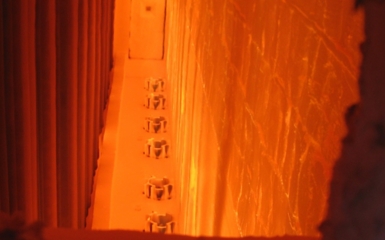In industrial processes and combustion systems, there’s a hidden hero that often goes unnoticed: the burner tile. It’s a common misconception that this essential component is merely a piece of refractory or firebrick. In reality, the burner tile is the “heart” of the burner, and its proper design, installation, and maintenance are critical for efficient burner performance. This article delves deep into the realm of burner tiles, shedding light on their crucial role in process burners and discussing the six key principles (the 6 Ms) that apply to burner tile design.
The Crucial Role of Burner Tiles
Burner tiles, sometimes referred to as quarls, are made from various types of ceramics and serve a multitude of purposes in burners. One primary function is to shield the internal metal components of the burner from the extreme heat in the combustion chamber. They also play a significant role in shaping the flame and in some cases, radiating heat. Maximizing radiant heat from process burners is essential in heaters that use radiant wall burners.
Common Issues and Their Impact
Improperly manufactured or installed burner tiles can result in a range of issues that significantly affect burner performance. For instance, a ceramic tile that isn’t correctly cured may sustain damage during startup. Inadequate installation can lead to operational problems and increased emissions. Furnace temperature and combustion product composition can impact tile material selection. Damaged tiles can hamper burner performance regarding flame shape, firing capacity and emissions. Oversized or undersized tiles can disrupt the air-fuel mixing and flame shaping, causing operational problems and reduced firing capacity. Different mounting considerations are required for burners fired downwardly, such as in down-fired reformers.
The 6 Ms of Process Burner Design Applied to Tiles
- Meter the Fuel and Air: Burner tiles help regulate the airflow by sizing the tile throat to allow a specific amount of air at a given pressure drop. Incorrect sizing can affect excess air and pressure drop, impacting burner operation and efficiency.
- Mix the Fuel and Air: Proper mixing of fuel and air is critical. Burner tiles facilitate mixing through various techniques, like using ledges inside the tile or holes through the side of the tile. These techniques are designed to improve combustion efficiency and reduce emissions.
- Maintain Ignition: Ensuring continuous ignition when fuel is flowing is essential for safety. Proper design and configuration of burner tiles help anchor and sustain the flame, preventing dangerous situations like flashback or lifted flames.
- Mold the Flame: The shape of the tile outlet determines the cross-section of the flame. Different tile shapes, like round and rectangular, create corresponding round and flat flame shapes. Choosing the right tile shape is essential for achieving desired results.
- Minimize Emissions: Some burner tile designs focus on reducing NOx emissions. Techniques like fuel staging and air staging result in flame temperature homogenization to help achieve this goal. The burner tile can allow for strategic placement and separation of fuel and air to achieve the desired effect of reduced NOx.
- Minimize Costs: Round and rectangular tile shapes are the most common and cost-effective choices for process burners. They are not only cost-efficient to manufacture but also tend to be stronger and more durable.
Tile Fabrication, Installation, Maintenance, and Troubleshooting
Proper tile fabrication is critical for burner performance. The shape and drying process of ceramic materials can impact tile integrity. Installation is also crucial: when multiple piece tiles are used, ensuring the correct tile throat area is maintained after assembly is critical. Proper maintenance involves repairing or replacing damaged tiles to ensure optimum burner performance. Regular inspection during heater operation is essential, and closer examination should be conducted during maintenance turnarounds to address any issues promptly.
Conclusion
Burner tiles play a pivotal role in process burners, influencing aspects such as fuel-air mixing, flame stability, flame shape, and emission control. It’s crucial for these tiles to be meticulously manufactured, precisely installed, and routinely maintained to ensure peak performance. Recognizing this importance, here at John Zink, we offer exceptional burner tiles, designed to achieve optimal burner efficiency and emissions for each of our offered process burner models.



